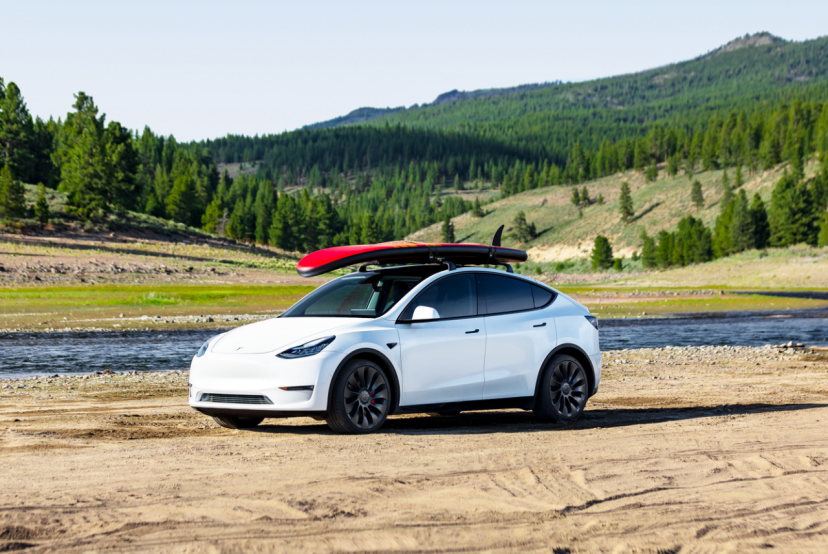Tesla Launches Autonomous Driving Vehicle Public Road Testing in Japan
According to a report by Nikkei on August 20, AI-driven Tesla self-driving cars have begun testing on public roads in Japan. During the test, drivers only need to keep their hands on the steering wheel, while the vehicle is operated by the AI system.

Model Y; Image source: Tesla
This summer, Tesla employees have started operating these autonomous vehicles to verify system safety and train the AI. The American electric car manufacturer plans to commercialize this technology as soon as possible, and may, in the future, push this autonomous driving system to Tesla vehicles already on the road through software updates.
This AI system can assess the surrounding environment and make decisions: the vehicle-mounted cameras analyze the road conditions around the car and accordingly control braking, acceleration, and steering operations. Currently, Tesla has commercialized this system in vehicles in the US and Chinese markets.
Tesla's system has reached the "L2 level" of autonomous driving standard, meaning the driver must keep their hands on the steering wheel and be ready to take control of the vehicle as needed.
Japanese domestic automakers such as Toyota have also launched L2-level autonomous driving-related features, but these functions are largely limited to driving assistance aspects such as highway lane-keeping and adaptive cruise control.
Tesla's technological advantage lies in its ability to independently complete environment analysis, decision-making, and driving control through AI, without relying on the high-precision maps commonly used in the autonomous driving field. It is reported that Tesla is expected to become the first automaker to equip vehicles with AI autonomous driving technology on ordinary roads in Japan.
Level 2 autonomous driving technology is legally recognized in Japan, but automakers must prove that it meets the safety standards set by the Ministry of Land, Infrastructure, Transport and Tourism in order to offer the technology to general users. Tesla hopes to leverage the data collected from AI-driven vehicles in the US and Chinese markets to accelerate the deployment of its autonomous driving system in Japan.
Tesla vehicles can upgrade their features through over-the-air (OTA) updates, which means that existing vehicles can also be equipped with new autonomous driving technology. If this system receives general usage approval in the Japanese market, the majority of the over 30,000 Tesla cars already sold in Japan are expected to be eligible for this feature upgrade.
Currently, autonomous driving technology is transitioning from human-designed "rule-driven" algorithms to "end-to-end" systems where AI is fully responsible for analysis, decision-making, and control.
In the field of end-to-end autonomous driving, companies from the United States and China are in leading positions. In China,End-to-end autonomous driving systemIt has gradually become a must-have for mid-to-high-end models. Japanese automakers Toyota, Nissan, and Honda are equipping their models for the Chinese market with driver assistance features jointly developed with the Chinese autonomous driving startup Momenta.
Honda Motor has stated that it plans to independently develop an end-to-end autonomous driving system and seeks to collaborate with a UK startup, aiming to launch this technology in the fiscal year 2027.
However, accidents involving autonomous vehicles have raised concerns in the United States and China. In Japan, when an L2-level autonomous vehicle is involved in an accident, the driver is held responsible. Therefore, ensuring the safety of the technology is a key prerequisite for the widespread adoption of this type of autonomous driving technology.
【Copyright and Disclaimer】The above information is collected and organized by PlastMatch. The copyright belongs to the original author. This article is reprinted for the purpose of providing more information, and it does not imply that PlastMatch endorses the views expressed in the article or guarantees its accuracy. If there are any errors in the source attribution or if your legitimate rights have been infringed, please contact us, and we will promptly correct or remove the content. If other media, websites, or individuals use the aforementioned content, they must clearly indicate the original source and origin of the work and assume legal responsibility on their own.
Most Popular
-

EVA Morning Prices on September 12: Most of the Market Holds Steady, Highest Rise of 50 Yuan
-

Domo Chemicals Files for Bankruptcy Protection in Germany! B. Braun Launches New Supply Assurance Program
-

Vynova's UK Chlor-Alkali Business Enters Bankruptcy Administration!
-

[PET Weekly Outlook] Polyester Bottle Chips Expected to Oscillate and Warm Up with Costs Today
-

Case Study | Clariant AddWorks™ Additives Solve Plastic Yellowing Problem






